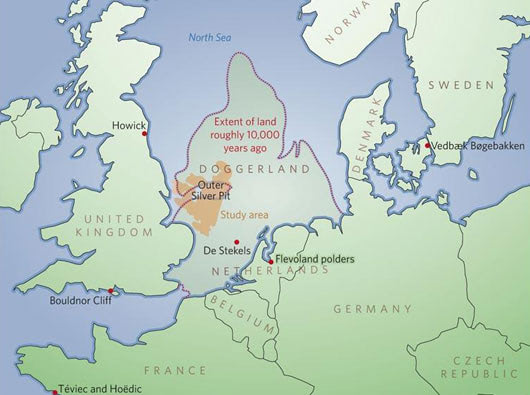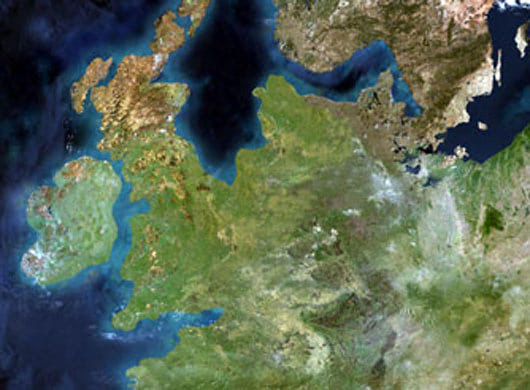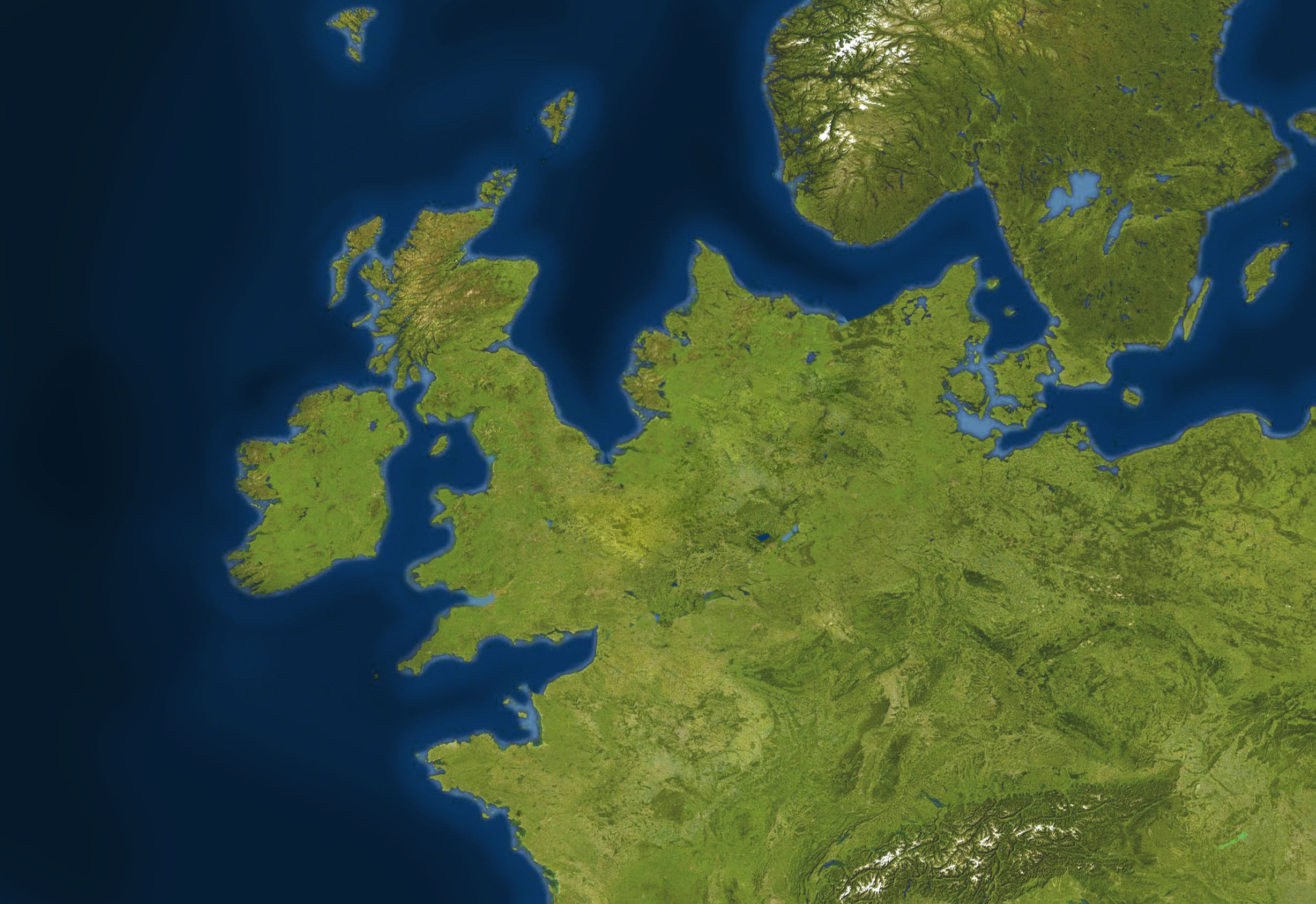So you think climate change is new? So you think the flooding of landmass by the oceans is a new? So you must have not heard of the times when people walked from London to Amsterdam.
Doggerland is the name of a vast plain that joined Britain to Europe for nearly 12,000 years, until sea levels began rising dramatically after the last Ice Age.Taking its name from a prominent shipping hazard—Dogger Bank—this immense landbridge vanished beneath the North Sea around 6000 B.C.

Like all landbridges, Doggerland seems to have been a pretty busy thoroughfare for ancient hunters and gatherers.But archaeologists hardly gave it a thought until 2002, when a small group of British researchers laid hands on seismic survey data collected by the petroleum industry in the North Sea.
It is thought that the sea level rose no faster than about one or two meters per century, and that the land would have disappeared in a series of punctuated inundations. According to marine archaeologist Nic Flemming, a research fellow at the National Oceanography Centre of University of Southampton, UK. “It was perfectly noticeable in a generation, but nobody had to run for the hills.”
Although hunter-gatherers usually didn't have much sense of ownership, land would have become an increasingly precious resource as the sea rose, which according researchers Clive Waddington & Nicky Miller might have led directly to the development of sedentism and territoriality.
According to Vince Gaffney, a landscape archaeologist at the University of Birmingham, UK, who along with his colleagues Simon Fitch and the late Ken Thomson, Gaffney established the mapping project to outline the terrain of Doggerland, the transformation of Doggerland in only a few thousand years from a harsh tundra into a fertile paradise, and eventually into the northern European landscape that we know today, “put human adaptability to the test”
Indeed, that may sound familiar in our times of human caused climate change.
The image below shows a satellite photo of Western Europe as it was 10.000 years ago. No need to say this is a speculative re-engineered rendering, as there obviously were no satellites circling the globe at the time.

Read the Nature article on the mapping of Doggerland. Related posts: Country looking for new land, If the implications of Global Warming were fair, Diesels global warming ready campaign, Humans to blame for global warming.

Doggerland
I’m working a project to put Doggerland on the contemporary map of Europe. The idea is to mark as Doggerland any land that has been reclaimed from the North Sea over the centuries - which of course is much of the Netherlands but also parts of East Anglia, Belgium Germany's Frisian islands, Jutland in Denmark. Have a look at the project -http://doggerland.net. There are some scans of Bryony Coles's hypothetical Doggerland maps on the site.
Posted on
Bob
I think that the real name was "Igeret". Because threre is a human writing of this catastrophe : L'Amduat of Thutmosis III tomb's. I am the french author of "Histoire de l'antiquité d'après Bob"' with explain this.
Posted on
Derek
Salt deposits in the Mediterranian Sea have proven that the land once was dry and the salt was formed in the presence of lakes. Also, hundreds of villages have been mapped on the sea floor, also proof that the area between Egypt and Europe was dry land except for sporadic lakes. Makes you wonder how the Atlantic took over, perhaps at the same time the Black Sea was flooded? As Alice said, "curiouser and curiouser."
Posted on
Sandra Dogger Klassen
Ma had it all wrong all those years, she insisted the Doggers were nothing but Pirates... I hope she got over that! Since 1600 Dogger men were fishermen of the Dog Fish on Dogger boats . It pleases the Dogger Family to know our name lives on.. The second period of the Jerrasic Epoch was known as the Dogger epoch.. we are the only family i know who trace their name back to the days of the dinorsaurs (Smile) ~~Sandra Dogger Klassen
Posted on
Koert van Mensvoort
@Juvenal: why ask Google, if you can also ask a real person?
Posted on
Juvenal
hi koert van mensvoort, can you say the titles of this articles? and where can I find it?
Posted on
Koert van Mensvoort
Doggerland is by no means the only lost world attracting scientific attention. Canadian researchers have mapped drowned river deltas and forests along the west coast of British Columbia in hopes of discovering campsites of Ice Age coastal mariners. And American archaeologists have charted and explored drowned river valleys in Florida’s Apalachee Bay, collecting from their slopes more than 4000 pieces of chipped stone as well as bone fragments from giant sloths and other Ice Age animals.
Posted on